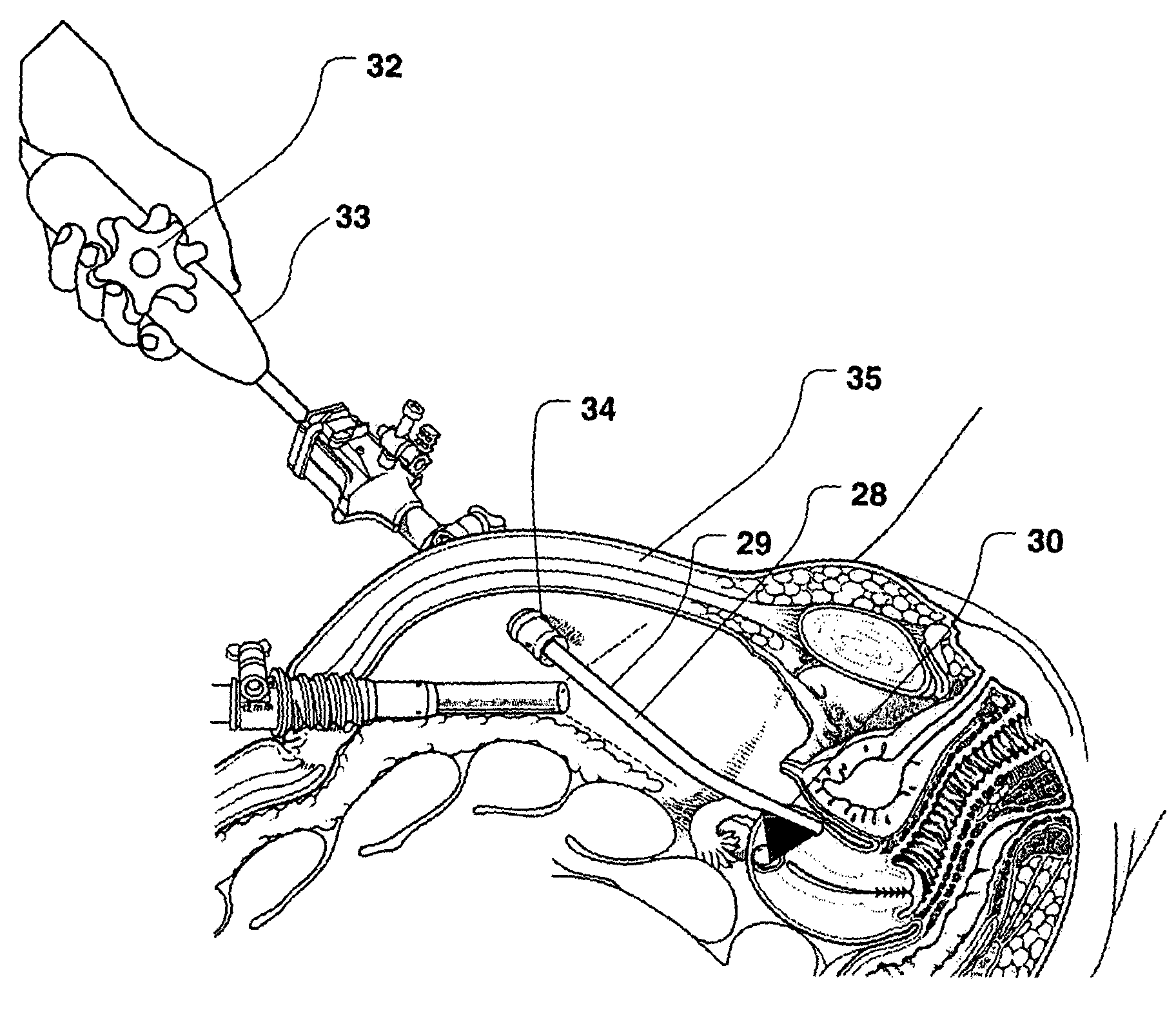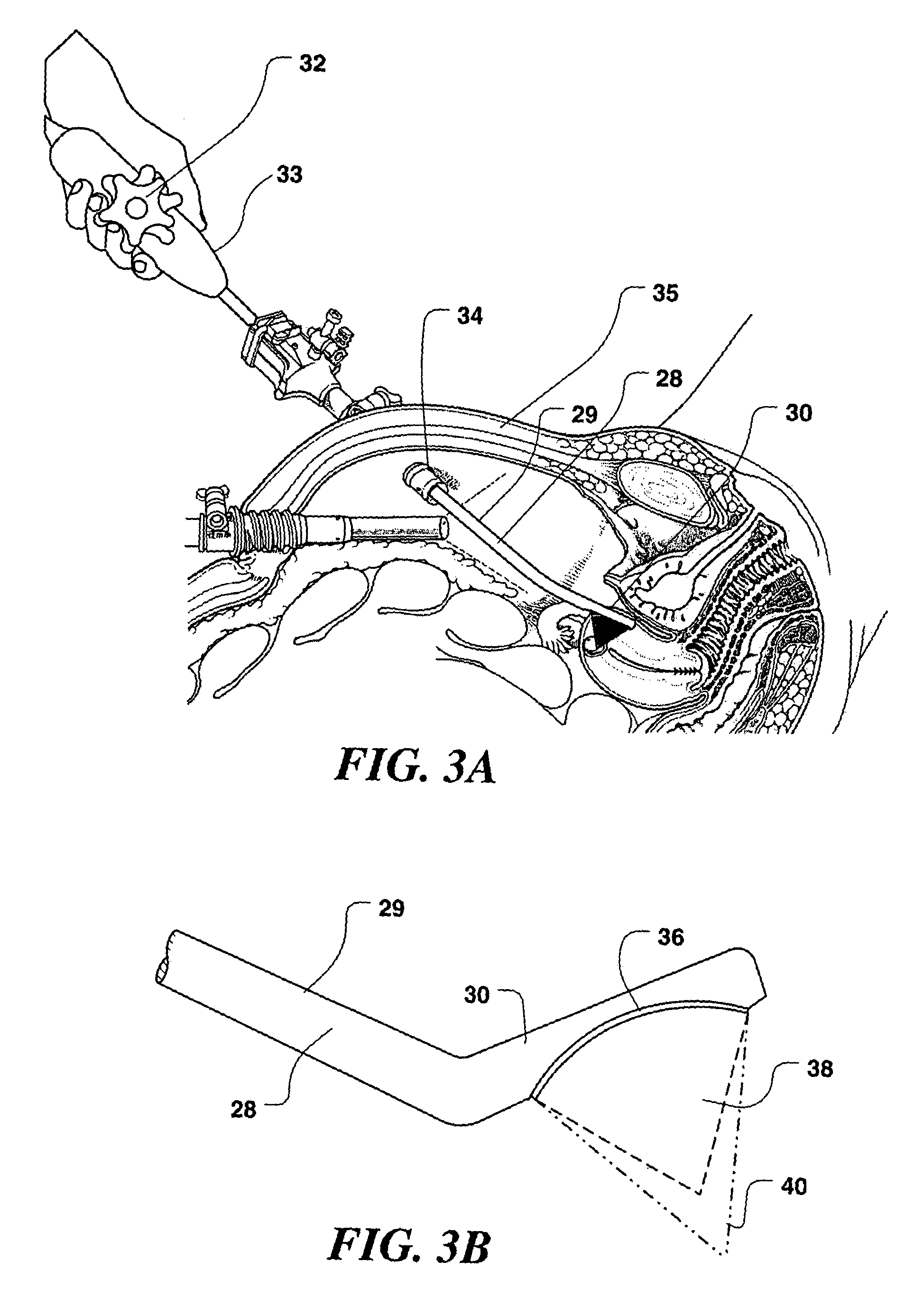Controlled high efficiency lesion formation using high intensity ultrasound
a high-efficiency, controlled technology, applied in the field of endoscopic, can solve the problems of significant trauma to patients, excessive bleeding and pain, and significant cost, and achieve the effect of efficient treatment of uterine fibroids
- Summary
- Abstract
- Description
- Claims
- Application Information
AI Technical Summary
Benefits of technology
Problems solved by technology
Method used
Image
Examples
Embodiment Construction
[0047]In the following description of the present invention, its application in treating uterine fibroid tumors is discuss in some detail. However, it should be emphasized that the device and methods described herein may also be used to apply ultrasound therapy treatment to other organ systems, lesions, and disease states. The therapy delivered may be thermal ablation, where a temperature rise is established to a level at which tissues are no longer viable; mechanical ablation, where cavitation is employed as the primary ablative means; or may achieve hemostasis wherein bleeding or blood flow in intact organs is arrested. Such applications of the present invention may be accomplished in open, invasive surgery, by way of established minimally invasive techniques (for example, by way of body entry through one or more small incisions or punctures), or in some cases, noninvasively, through the skin surface or through the linings of body cavities such as the rectum, vagina, or esophagus....
PUM
 Login to View More
Login to View More Abstract
Description
Claims
Application Information
 Login to View More
Login to View More - R&D
- Intellectual Property
- Life Sciences
- Materials
- Tech Scout
- Unparalleled Data Quality
- Higher Quality Content
- 60% Fewer Hallucinations
Browse by: Latest US Patents, China's latest patents, Technical Efficacy Thesaurus, Application Domain, Technology Topic, Popular Technical Reports.
© 2025 PatSnap. All rights reserved.Legal|Privacy policy|Modern Slavery Act Transparency Statement|Sitemap|About US| Contact US: help@patsnap.com



